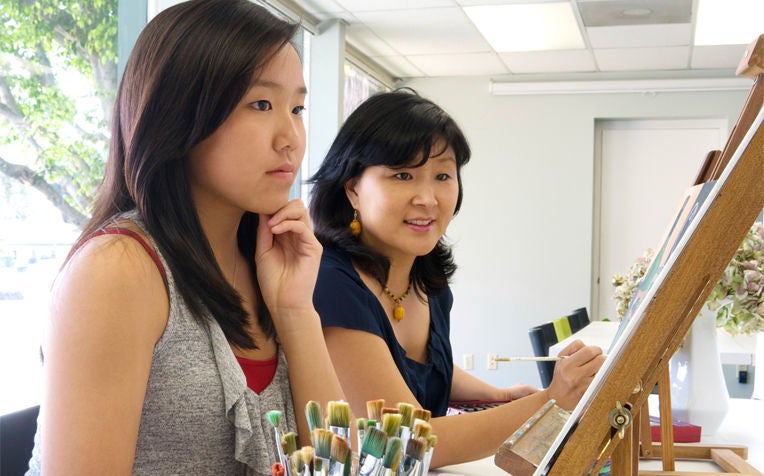
Art therapy helps eating disorder patients express difficult emotions that are otherwise expressed through the control of food.
Eating disorders are illnesses originating from a combination of issues such as long-standing behavioural and emotional struggles, physical concerns, interpersonal relationship issues and social factors.
There are different types of eating disorders. Besides anorexia and bulimia, there are also variants of the illness such as binge eating disorder. People struggling with eating disorders often use food as a coping strategy to deal with difficulties. Behaviours can include restricting food intake, strict dieting, binge eating and purging. These behaviours are physically harmful and can damage emotional well-being and reduce self-esteem even further.
In treating eating disorders such as anorexia or bulimia, a multi-disciplinary team can enhance the chances of recovery. Treatments include a careful combination of medical treatment, nutrition management, psychotherapy, art therapy, family-based therapy, as well as physical and occupational therapy.
What is art therapy?
Art therapy is a form of psychotherapy that uses art to enhance and better understand one’s mental and emotional well-being. It can be practised on an individual basis or as group therapy.
In art therapy, art is used as the focus and medium of communication. Almost any medium can be used for art therapy, including:
- Painting
- Drawing / sketching
- Collage making
- Scrapbooking
- Sculpting
- Clay modelling
Through these mediums, art therapists guide individuals to create artworks and to reflect on the process of art making as well as the artwork itself. New insights and awareness about the self can be gained during the creative process. Better coping mechanisms can be learnt and an improvement in cognitive functions can result from finding pleasure and enjoyment through art making.
Art therapy is:
- About the art-making process and the meaning of the artwork
- Creating what feels right for you
- Showing that only you, yourself have the answer
- A safe, reflective space for you to discover yourself, explore issues and find some answers
No special talent or previous experience in art making is required for art therapy to be effective. Art therapists have specialised training in psychotherapy and knowledge of art mediums to appropriately assist and provide the space for individuals to communicate their feelings, thoughts and emotions.
Art therapy and eating disorders
Art therapy can be a valuable tool in the recovery process of individuals with eating disorders. It can be introduced as an alternative coping skill where patients are encouraged to creatively express difficult and overwhelming feelings and emotions that are otherwise expressed through the control of food. Art therapy gives form to feelings, concerns, and stress which can be understood and addressed.
Here are some benefits of art therapy in the treatment of eating disorders:
- Understanding, learning and coping with difficult and overwhelming feelings and emotions in healthy ways
- Help in seeing problems from a different perspective
- Creative problem solving
- Discharge of strong emotions
- Stress relief
- Increased awareness and communication around the illness
A particularly useful aspect of art therapy is the creation of images that represent the eating disorder. Using this technique, individuals are guided to find shapes, colours, and words that describe problems that were unknown to them. Once these shapes are formed, open dialogue and reflecting on these artworks are encouraged so that new insights into the illness can be gained.

“Don’t let the numbers constrain you” - Picture by: Toby Huynh, Curator, The SGH Museum
Above is an artwork created by a nurse involved with the SGH Eating Disorders Programme. Guided by an art therapist, she decorated a modified bathroom scale to encourage the audience to search for self-worth that is not based on physical appearance or the numbers on the scale.
Ref: S13
Contributed by


















 Get it on Google Play
Get it on Google Play